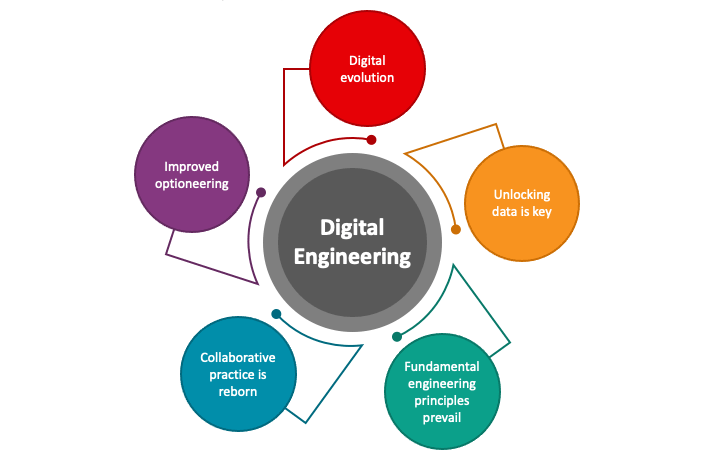Digital engineering is an emerging field that combines traditional engineering principles with the latest digital technologies to design, simulate and optimize complex systems. This innovative approach to engineering allows engineers to create and test digital models of products and systems before they are physically built, saving time, reducing costs and minimizing errors.

Digital engineering involves the use of computer-aided design (CAD) software to create 2D and 3D models of products and systems. These models can then be used to simulate various scenarios and test the performance of the design in a virtual environment. This approach enables engineers to identify and correct design flaws early in the development process, reducing the need for expensive physical prototypes and iterations.
In addition to CAD software digital engineering also utilizes other advanced technologies such as simulation softwares virtual reality (VR) and augmented reality (AR) systems and cloud computing platforms. Simulation software allows engineers to run complex simulations of products and systems, enabling them to test the performance of the design under different conditions and scenarios. VR and AR systems provide a virtual environment where engineers can visualize and interact with digital models in 3D, making it easier to identify design flaws and make necessary changes. Cloud computing platforms provide a powerful computing infrastructure that can be used to perform complex simulations, analyses and make it possible to test multiple design iterations quickly and efficiently.
One of the major benefits of digital engineering is that it enables engineers to optimize the design of products and systems for performance, reliability and safety. By using advanced simulation tools, engineers can evaluate and compare different design alternatives, and select the one that best meets the requirements of the project. This approach can also help reduce the risk of costly design changes and delays that can occur during the later stages of product development.
Digital engineering is being used in a variety of industries, including aerospace, automotive, energy and construction.
In the aerospace industry — digital engineering is being used to design and test new aircraft and spacecraft, allowing engineers to optimize the design for performance and safety.
In the automotive industry — digital engineering is being used to develop and test new vehicles, including electric and autonomous vehicles.
In the energy industry — digital engineering is being used to design and optimize renewable energy systems such as wind and solar power plants.
In the construction industry — digital engineering is being used to design and simulate complex building systems, such as HVAC and electrical systems.
In conclusion, digital engineering is an exciting and innovative approach to engineering that is transforming the way products and systems are designed and developed. By leveraging advanced technologies such as CAD software, simulation tools, VR and AR systems, and cloud computing platforms, engineers can create and test digital models of products and systems before they are physically built. This approach can help reduce costs, improve performance, and minimize errors, making it an essential tool for engineers in a wide range of industries.

